Planning your own trip? Prepare for your trip
Use Rough Guides' trusted partners for great rates
Plan and book your private, tailor-made tour with vetted local experts
Conímbriga is Portugal’s most impressive Roman site, just 16km southwest of Coimbra and about a kilometre south of the small market town of Condeixa-a-Nova. It’s an easy day trip from the city, though staying overnight in Condeixa gives you more time to explore without rushing.
What you see today is only a fraction of the Roman town that once thrived here. Conímbriga was at its peak from the end of the 1st century BC to around the 4th century AD. Much of it still lies buried beneath the nearby village of Condeixa-a-Velha. A vast amphitheatre is believed to be hidden under the fields there, undiscovered but not forgotten.

Hey, I’m Joel, your Portugal travel expert. If you’re curious about Roman history, Conímbriga is one of the most rewarding places you can visit in the country. You’re not just looking at ancient stones. You’re walking through tiled courtyards, under crumbling columns, and past walls that still carry the marks of everyday Roman life. It feels like history is breathing just beneath the surface.
This Conímbriga travel guide covers the essentials: how to get there, what to look out for, and where to stay nearby. The site isn’t huge, but don’t rush it. Spend time tracing the patterns of the mosaics, peek into what used to be a family bathhouse, and let your imagination fill in the gaps between the ruins.
Joel’s tip
Visit late in the afternoon, especially in summer. The crowds thin out, and the low light sharpens the colors of the mosaics; the place feels even more otherworldly.
Best time to visit
Spring (March to May) and autumn (September to early November) are the ideal times. The weather’s warm but not overwhelming, and there’s more space to explore. Summer can be scorching, especially around midday. Winter is quieter and cooler, but the site stays open year-round.
How to get to Conímbriga
The nearest transport hub is Coimbra, about 16km away, with frequent train and bus connections from Lisbon and Porto. From Coimbra, you can take a local bus to Condeixa-a-Nova, then walk or catch a short taxi ride to the site. Driving is the easiest option. It takes around 1 hour and 40 minutes from Lisbon or just over 1 hour from Porto, and gives you more flexibility to explore the surrounding region.
Best areas to stay near Conímbriga
Conímbriga sits in central Portugal, just outside the small town of Condeixa-a-Nova and about 16km southwest of Coimbra. It’s roughly a 1 hour and 40 minute drive from Lisbon and a little over an hour from Porto.
This is one of the most important Roman sites in the country and a rewarding stop on any central Portugal itinerary. After visiting the ruins, you can explore the university city of Coimbra, head into the hills of Serra do Sicó for quiet walking trails, or visit nearby Roman relics in Rabaçal and Tomar.


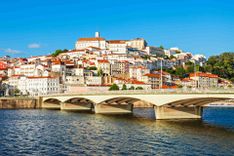
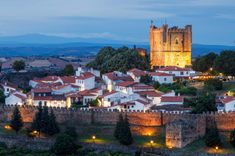

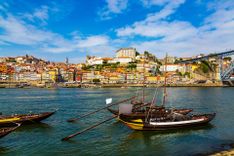










Conímbriga is compact but packed with detail. You’ll cover the whole site on foot, from the city gates to the elaborate Roman villas, and it’s worth taking your time. There’s no public transport inside the site, and vehicles aren’t allowed past the entrance, but that’s part of what keeps the place feeling like a walk through time.
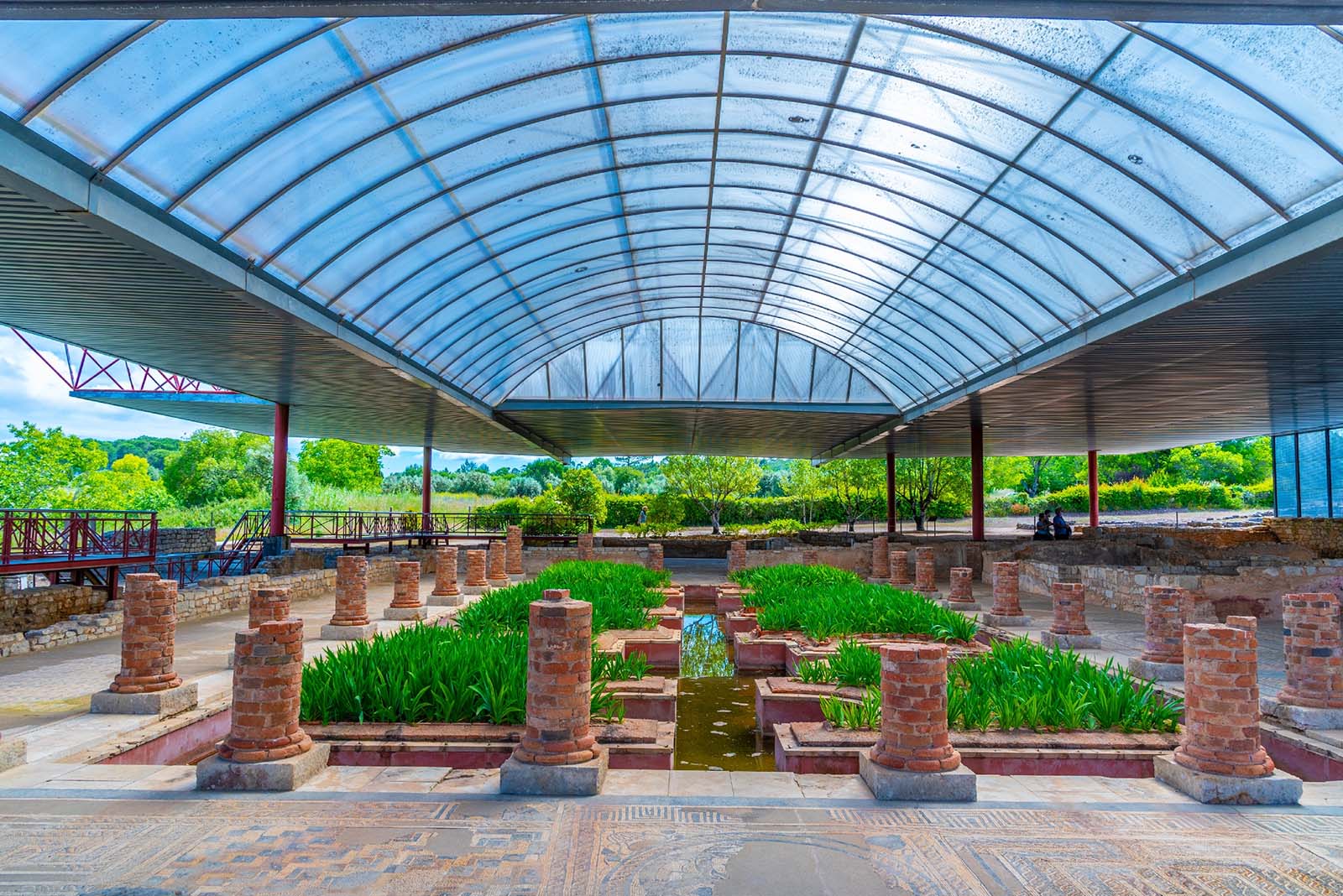
The house of the fountains at the site of Conimbriga roman ruins in Portugal © Shutterstock
If you’re wondering how much time to set aside for Conímbriga, a half-day is enough to explore the main site and museum at a relaxed pace. That gives you time to walk through the Roman villas, admire the mosaics in the House of the Fountains, and visit the well-curated Museu Monográfico with its collection of statues, tools, and household artifacts.
But if you’re into archaeology or Roman history, give it a full day. That way, you can slow down, explore the lesser-known parts of the ruins, like the defensive walls and the partially excavated forum, and take a break in the shaded picnic area near the entrance. Bring snacks or pick up something in nearby Condeixa-a-Nova, as food options at the site itself are minimal.
Conímbriga itself doesn’t have much in the way of accommodation, but nearby Condeixa-a-Nova and Coimbra offer good options for every type of traveler. Here’s where to stay depending on your travel style.
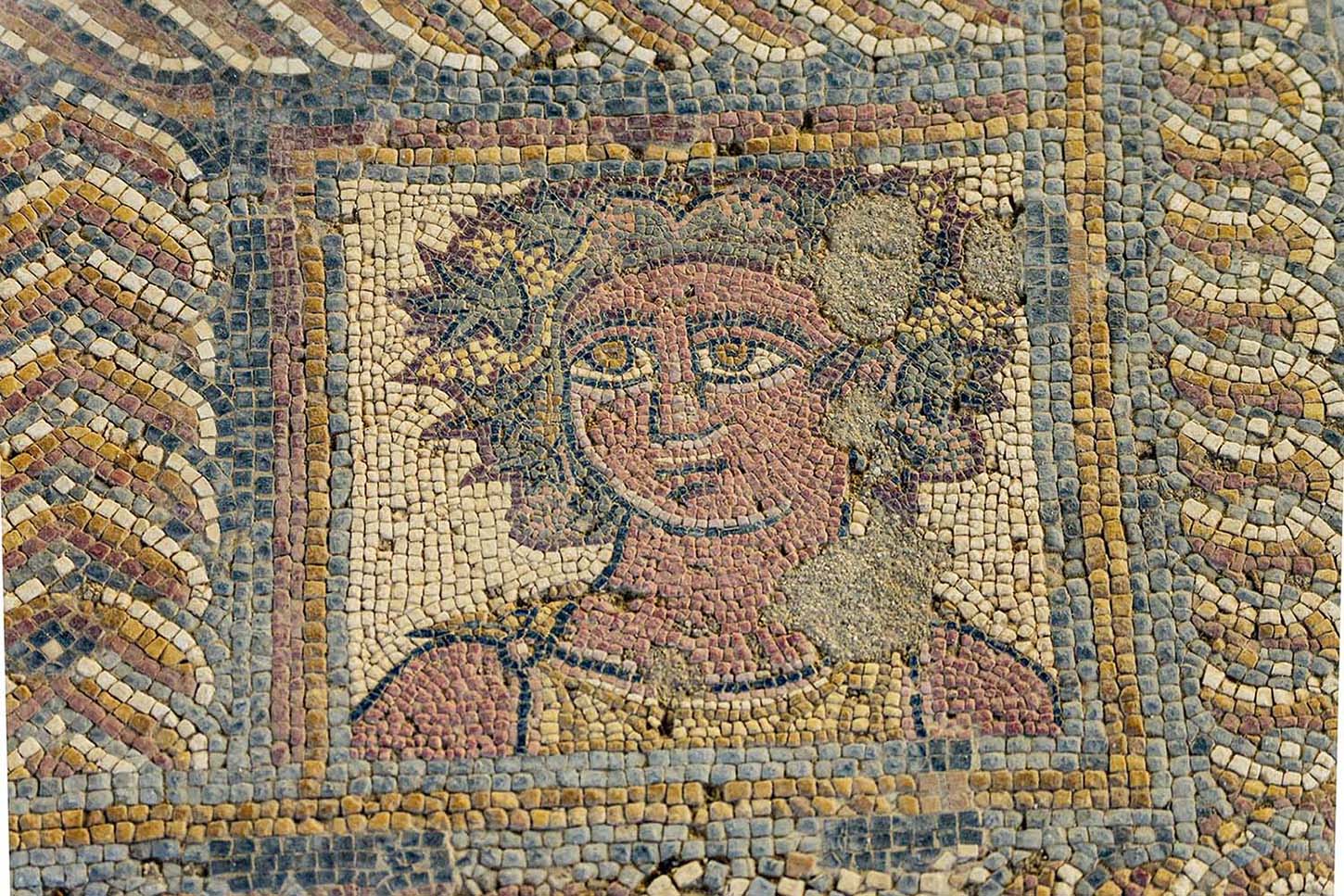
Female face in figurative mosaic, House of the Surtidores, first half of the 2nd century, Conimbriga © Shutterstock
Conímbriga may not be a large site, but what it lacks in size it makes up for in depth. With its intricate mosaics, layers of urban planning, and traces of daily Roman life, it’s the kind of place where the longer you linger, the more you notice. Here’s a list of things to do in Conímbriga, and why each one is worth slowing down for.
This is Conímbriga’s star attraction. Once home to a wealthy Roman family, the House of the Fountains is a sprawling complex of courtyards, columns, and tiled floors, some of which are still in remarkable condition. The name refers to the network of small fountains that once decorated the garden. Some still flow today thanks to a careful reconstruction.
Stand still and imagine life here two thousand years ago. The layout is so well preserved that you can trace the path from the main entrance to the dining rooms and private baths. Early morning or late afternoon light brings out the mosaic patterns best, and there's usually a breeze moving through the open courtyard.
Unlike many Roman sites, Conímbriga still has sections of its defensive walls intact. These rise several meters high and stretch around the visible remains of the city. They were built later in the town’s history, during the third-century invasions, when the population shrank and the need for protection grew urgent.
Walk along the perimeter path to understand the scale and desperation of that period. Look closely at the stonework and you’ll see hasty repairs made with broken tiles and reused materials. These are clues to the pressures the town faced during its final years.
Right next to the ruins, this museum helps connect the dots. It’s compact but well presented, with sculptures, tools, coins, and everyday items recovered from the site. You’ll find marble busts, painted plaster fragments, and even Roman toys.
The museum tells the story of Conímbriga from its Iron Age roots to its Roman peak and eventual decline. Labels are in both English and Portuguese. Don’t miss the scale model of the city near the entrance. It gives helpful context before or after you walk the ruins.
This is one of the clearest places to see Roman engineering in action. The baths are laid out just like those in Rome. There’s a changing room, a cold plunge, warm and hot rooms, and the remains of a furnace.
Look for the hypocaust system beneath the raised floors. These stacked brick columns once allowed hot air to circulate beneath the rooms. You can still see where fire was fed into the system from the outside. It’s a quiet reminder that comfort and design were as important in Roman Portugal as they were in the capital.
Mosaics are scattered across the site. Some show animals or mythological scenes, others stick to geometric designs. You can find them in the House of the Fountains, the House of Cantaber, and several smaller villas.
Highlights include Venus rising from the sea, a deer being hunted, and a repeating labyrinth pattern. You can get surprisingly close to many of these mosaics. Just watch your step and take your time. The best viewing light is early or late in the day when the shadows deepen the lines and patterns.
Conímbriga’s original street plan is still easy to follow. Broad paved roads cut through the ruins in straight lines. Side alleys connect residential quarters to public buildings like the baths and forum.
Some of the paving stones still bear grooves from cart wheels. Shopfronts line a few streets, with square layouts that suggest a busy commercial life. Walking these streets gives you a sense of the rhythm of the town.
Conímbriga’s amphitheatre hasn’t been excavated, but archaeologists believe it lies beneath the nearby village of Condeixa-a-Velha. From the site, it’s a short drive or walk to where this massive structure likely once stood.
There’s no formal signage or remains to explore, but standing in the open field where crowds once gathered adds a layer of imagination to your visit. It also gives you a sense of how much remains hidden under modern villages nearby.
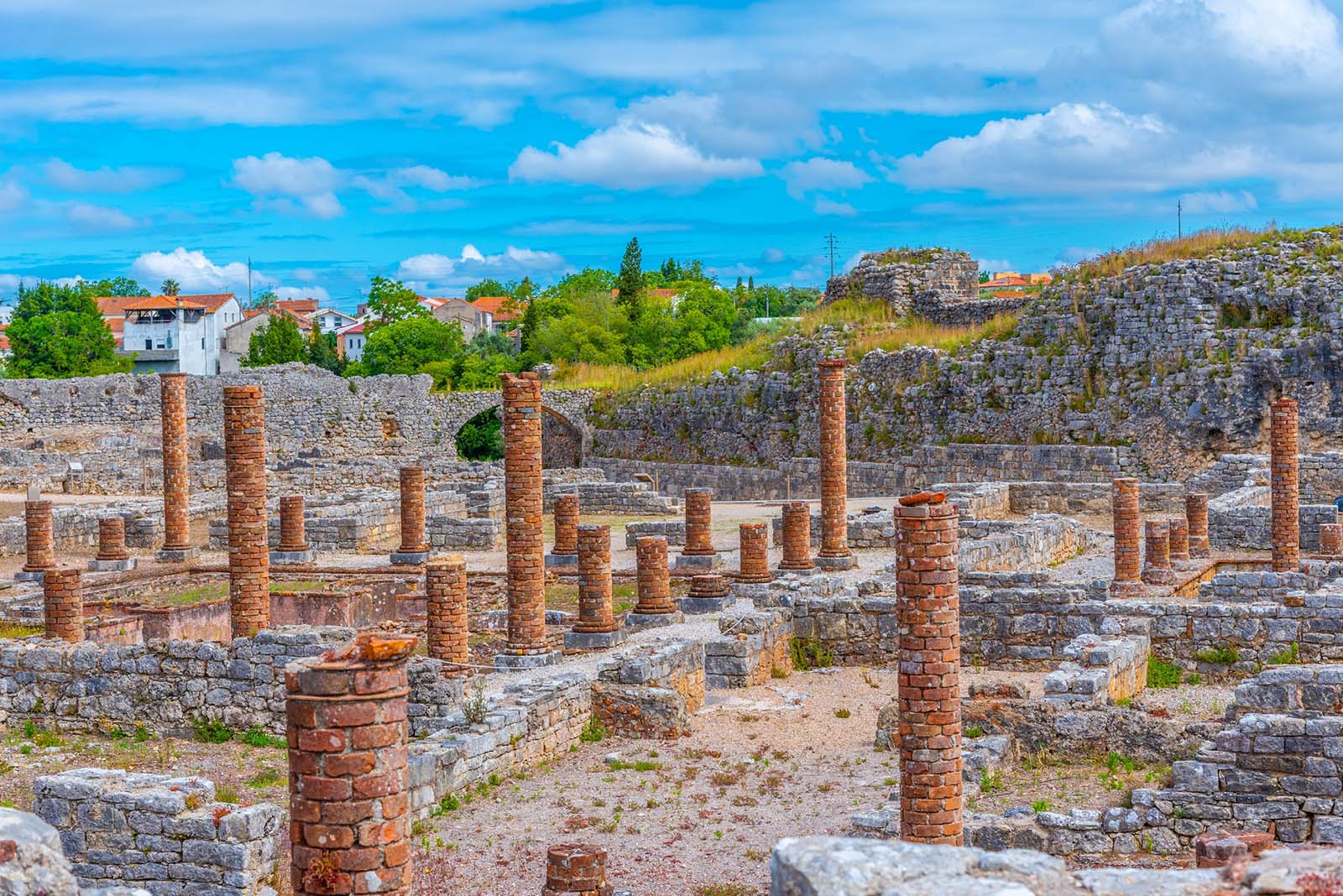
Roman ruins of Conimbriga near Coimbra in Portugal © Shutterstock
Near the entrance, there’s a shaded picnic area with wooden benches and a few tables. This is a good spot to take a break, especially if you’re visiting with kids or arriving during the warmer months.
There’s no café or restaurant inside the site, so bring snacks or grab food in Condeixa-a-Nova before you arrive. The olive trees offer shade, and the quiet surroundings let you reset before or after exploring the ruins.
Just 20 minutes by car from Conímbriga, the villa at Rabaçal offers another layer to the Roman story in Portugal. It’s smaller and less visited but features beautiful mosaics and a more rural view of Roman life.
There’s also a small museum with finds from the site. You can see different building styles here, some blending Roman techniques with local Lusitanian traditions. It’s less polished than Conímbriga but rewarding in its own way.
A day at Conímbriga fits perfectly with an afternoon or overnight stay in Coimbra. You can explore the Roman cryptoporticus under the Machado de Castro Museum, see parts of the ancient aqueduct, and relax along the river.
Coimbra is only about 20 minutes from Conímbriga by car. You’ll have access to restaurants, fado music, and university history to round out the trip. If you only have one day in central Portugal, this is a combination that delivers both ruins and living culture.
Conímbriga has a Mediterranean climate with inland influence, which means warm, dry summers and cooler, wetter winters compared to the coast. Its location in central Portugal, about 150 meters above sea level, keeps temperatures moderate, though you’ll still notice bigger swings between day and night than in places like Lisbon or Porto. Average temperatures range from 46°F (8°C) in January to 86°F (30°C) in August. Summers can be hot, but not extreme, and winters tend to be chilly rather than cold. For current conditions, check IPMA (Portuguese Institute for Sea and Atmosphere).
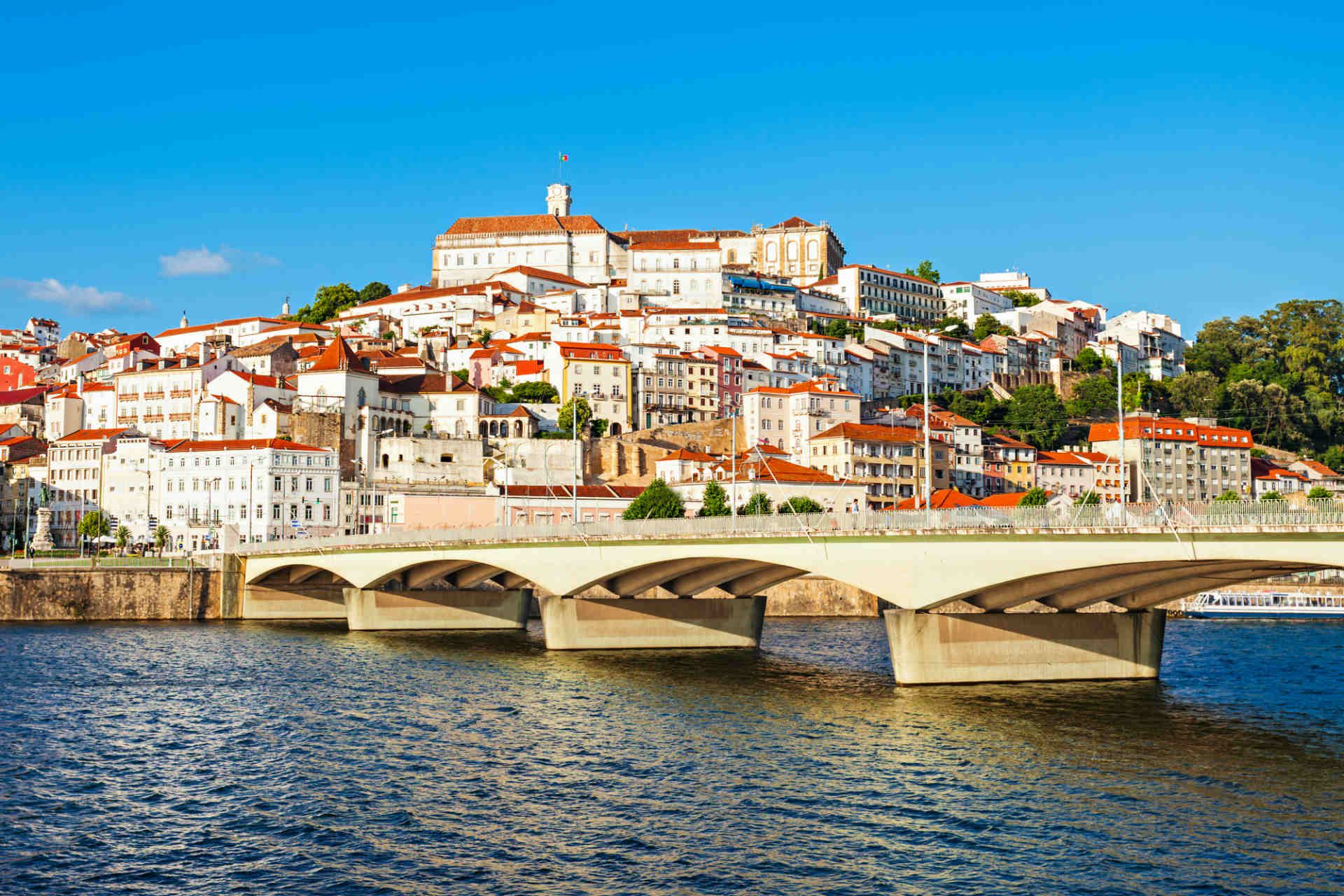
Coimbra, Portugal © saiko3p/Shutterstock
Conímbriga itself doesn’t have much in the way of dining options inside the archaeological site. But just a short drive or walk away in Condeixa-a-Nova, you’ll find a handful of low-key restaurants and cafés serving classic central Portuguese dishes. These spots are mostly family-run, affordable, and focused on traditional flavors. Expect grilled meats, slow-cooked stews, and plenty of bread, olive oil, and wine from the surrounding region.
Here are some unique experiences we can arrange for your tailor-made Conímbriga visit. All are private, flexible, and designed by our local travel experts to help you see more than just the ruins.
Discover Portugal's most captivating stories
Use Rough Guides' trusted partners for great rates
written by
Olga Sitnitsa
Online editor at Rough Guides, specialising in travel content. Passionate about creating compelling stories and inspiring others to explore the world.